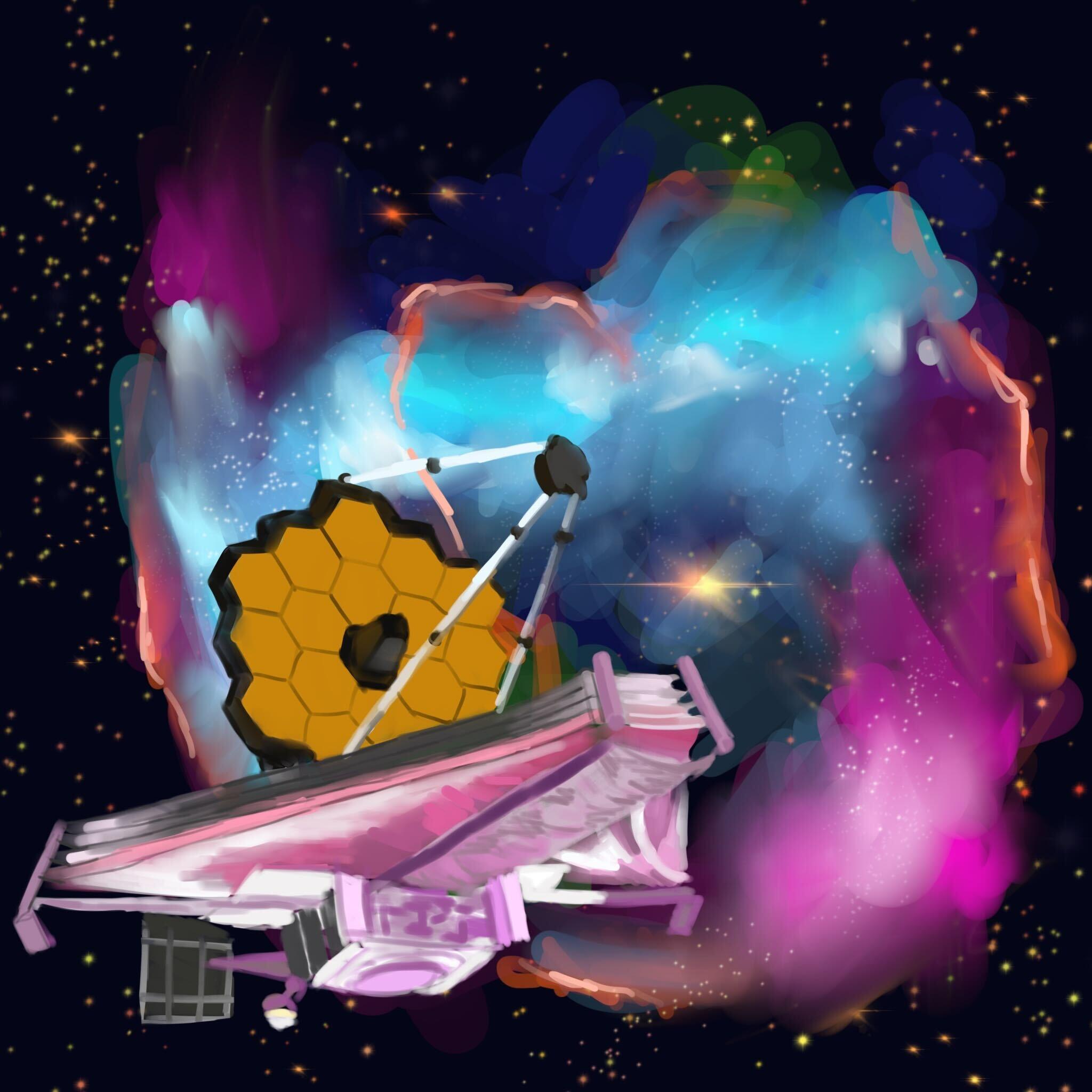NASA’s James Webb Space Telescope was launched last December on a mission to peer farther into the universe than any telescope has ever done. The $10 billion investment is one of the most powerful space telescopes launched and has successfully revealed new images of galaxies, stars and an exoplanet that might help researchers uncover discoveries and solve mysteries about the origins of the universe.
The telescope uses infrared light to detect celestial bodies beyond our solar system. Astrophysics teacher Michael Lupoli said there are multiple reasons using infrared light is valuable for the Webb telescope.
“One is to penetrate gas clouds,” Lupoli said. “If we were using visible light, we wouldn’t be able to see through the cloud to see what’s going on inside of there.”
Lupoli also said the telescope allows people to view the present as well as the past.
“These stellar nurseries or stars are being born, but infrared allows us to essentially peer into the cloud and get a lot more detail of what’s going on inside that cloud,” Lupoli said. “The other benefit of using infrared is that it allows us to look back in time.”
When the first stars and galaxies formed 14 billion years ago, Lupoli said they emitted electromagnetic radiation.
“Because of the expansion of the universe, what’s happening to the light is that it’s being redshifted, which is when the wavelength gets stretched out as a result of the stretching of space-time,” Lupoli said.
Lupoli said this provides information on the earliest years of the universe, furthering the understanding of how galaxies and stars first formed. He also said the telescope has the ability to find exoplanets, which are planets orbiting stars outside of our solar system.
“An exciting aspect of astrophysics is looking at these exoplanets and trying to understand what planets are out there,” Lupoli said. “A lot of us are very curious about whether or not one of these planets harbors life.”
Freshman and Astronomy Club President Vrajakishor Rajmohan said he is impressed with the numerous images of our galaxy he has seen from the Webb.
“The telescope has captured some very nice images of Jupiter, its belts and how the atmospheric circulation is seen from the telescope,” Rajmohan said. “The telescope has captured images of nebulae — the birthplace of stars.”
Rajmohan also said Webb will be able to use its infrared astronomy to see very far into the past and make further developments in researching the origins of the universe.
Although Rajmohan said that Webb has not discovered any signs of life beyond the Earth, it has detected water and oxygen on some exoplanets. He said this discovery also reveals stellar evolution–the process in which a star changes over a course of time, has and continues to progress over time.
“Older stars pave the way for new stars to form, as they create nebulae and star-forming regions,” Rajmohan said.
Although technology is constantly changing how scientists determine whether life exists outside our solar system, Lupoli said he is confident Webb will be able to accomplish this mission.
“It might be hard to determine if life is there with our current technology and ability to travel,” Lupoli said. “There’s a lot out there, and Webb is going to open our eyes to all of it.









